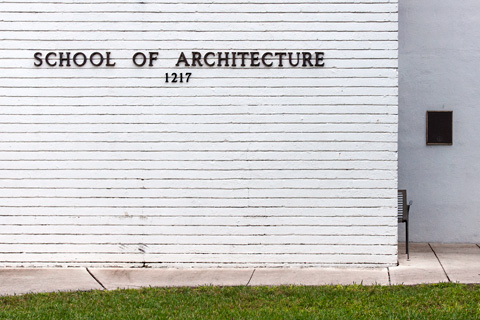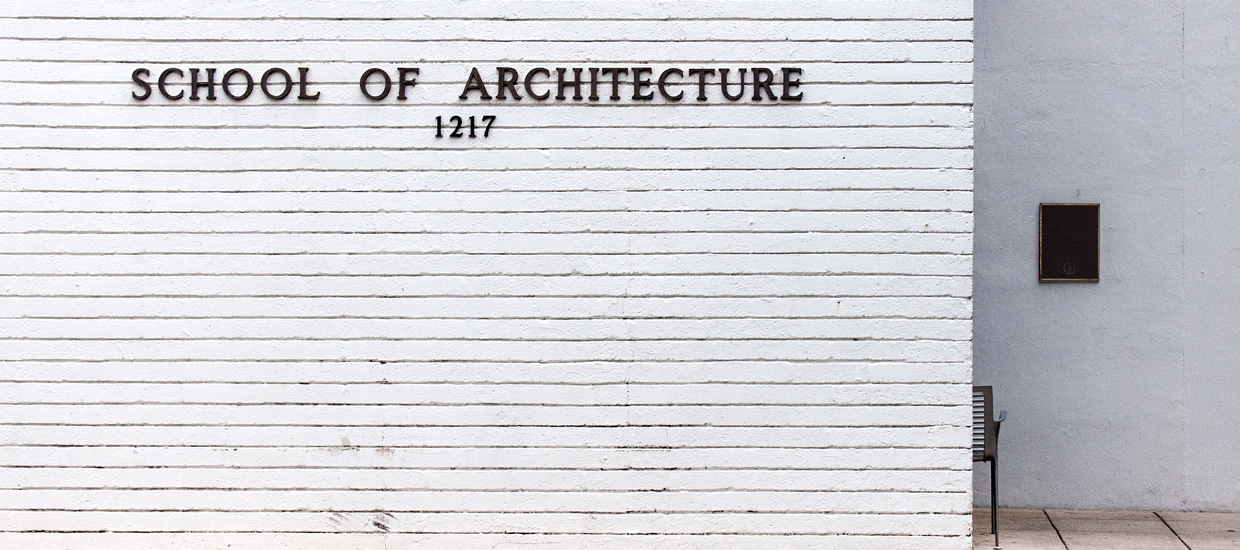In 1927, John Llewellyn Skinner, initiated the first program in architecture at the University of Miami. Skinner, a graduate in architecture from the University of Toronto and Harvard University was winner of Harvard’s Nelson Robinson Travelling Fellowship, and went to the American Academy in Rome.
After leaving a position at Georgia Tech, he joined Phineas Paist, the noted Philadelphia architect, and Denman Fink, an artist whose work was in the collections of the National Academy and the Art Institute of Chicago.
Fink and Paist were known for the buildings they imagined for Coral Gables, including the University of Miami’s Merrick Building. As George Merrick’s uncle, Fink impacted the emerging architecture of Coral Gables, fusing traditions from Central and Latin American colonial architecture.
In 1931 and 1932, U-SoA's student work was shown in the annual exhibitions of the Architectural League of Greater Miami. The watercolors displayed were similar to the Beaux-Arts esquisse work common to the period, as issued by the Society of Beaux-Arts Architects in New York.
By the mid-1930s, factors caused the University to reduce operations and the architecture program was impacted.
Charlton W. Tebeau, author of The University of Miami: A Golden Anniversary History, 1926-1976, described Skinner’s collaboration with a group of dissident faculty, calling to conduct an independent investigation of President Bowman Ashe, UM’s first president. Ashe's win resulted in Skinner's departure from the University. The Architecture program re-emerged in 1950, as the new College of Engineering. Prof. Jan Hochstim, entered that program and graduated in 1954. For decades, he provided a valued link to the tradition of architecture at the University of Miami.
By 1966, after completing his B.Arch at the University of Illinois, Hochstim joined the faculty under James Elliott Branch. Branch had brought a number of faculty from Illinois, and they created a focus for the five-year bachelor of architecture program. The program would lead “to the development of architects, who as enlightened individuals, responsible citizens, and resourceful professional men, will serve their society in attaining a worthy architecture (Bulletin 1965, 249).” Although the courses have broadened, the essential goal of contributing to a better world, remains at the heart of the program.
When President Edward T. Foote II arrived at UM in 1981, he initiated three new schools: Architecture, Communications and International Studies.
By 1983, the School of Architecture achieved autonomy, moving to its current campus location; the international style buildings on this campus were designed in 1947 by Marion Manley, South Florida’s first female architect. Elizabeth Plater-Zyberk was a faculty member during the opening days of the new school, and with Adjunct Prof. Andres Duany, subsequently founded the school’s graduate program in Suburb and Town Design. That program attracted the interest of faculty and students to the first professional M. Arch. degree, which was initially awarded to the class of 1993.
In 1992, U-SoA participated in post-Hurricane Andrew charrettes and focused all students on issues of rebuilding. It was during this period that the Center for Urban and Community Design (CUCD) was established.
In 1995, Plater-Zyberk became Dean of the School, and in 2006 she received the additional title of Distinguished Professor of the University.
In 2001, the School celebrated the University’s 75th Anniversary with a reception and exhibition of alumni work “Building Through Time: the Making of a School of Architecture, 1926 to 2001.” The same year, the Knight Program (formed through a Knight foundation grant), eventually became the Master of Real Estate Development and Urbanism program.
In 2003, the fundraising campaign for a new building continued as U-SoA broke ground for its long-awaited architecture center. Designed by renowned European architect Leon Krier, the building was dedicated as the Jorge M. Perez Architecture Center in October 2005, and remains the hub of the U-SoA campus.
In January, 2007, the Congress for the New Urbanism, Florida Chapter awarded U-SoA the John Nolen Medal for Contributions to Urbanism in Florida. This is the highest honor conferred by the Chapter and recognized the School’s superior effort in furthering the principles of New Urbanism in Florida.
Elizabeth Plater-Zyberk stepped down as Dean of U-SoA in 2012 and is now the Malcolm Matheson Distinguished Professor of Architecture, as well as director of the Master of Urban Design program. Professor and Associate Dean Denis Hector served as interim Dean for one year.
Rodolphe el-Khoury began his tenure as Dean in July, 2014. His inaugural year brought a record-setting gift for a new facility: the Thomas P. Murphy Design Studio Building. Construction work on this Arquitectonica-designed building for housing studios, offices, presentation spaces and a digital fabrication lab, will begin in Fall 2016.
At present, U-SoA has more than 504 students, including 374 undergraduate students and 130 graduate students. There are about 60 full and part-time faculty, plus a professional staff of 20, educating and supporting students. More than 50 percent of the School’s students participate in study-abroad programs based in Europe, Asia, the Caribbean and Latin America.





